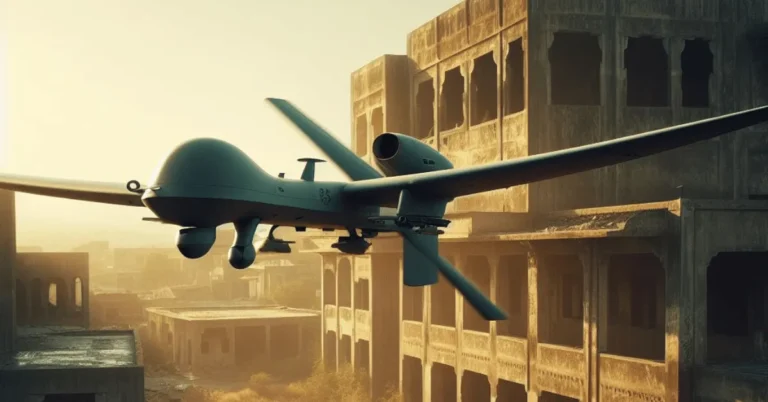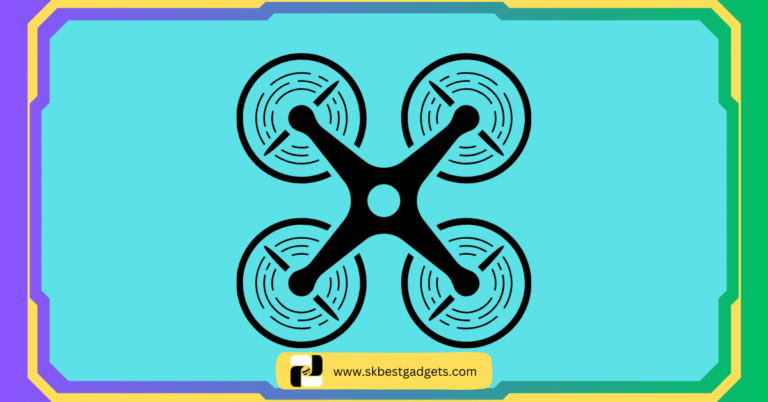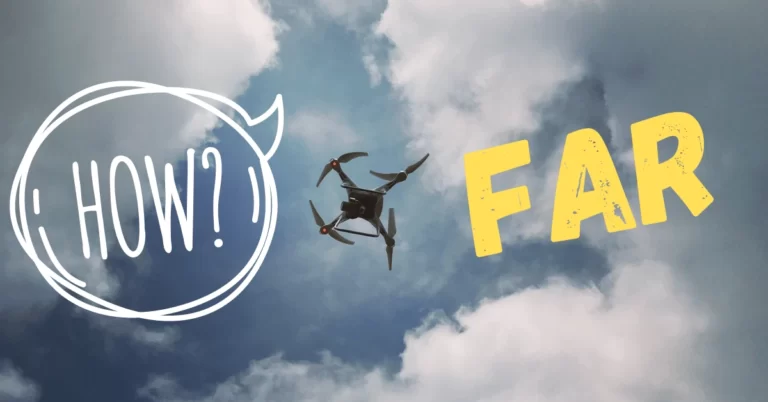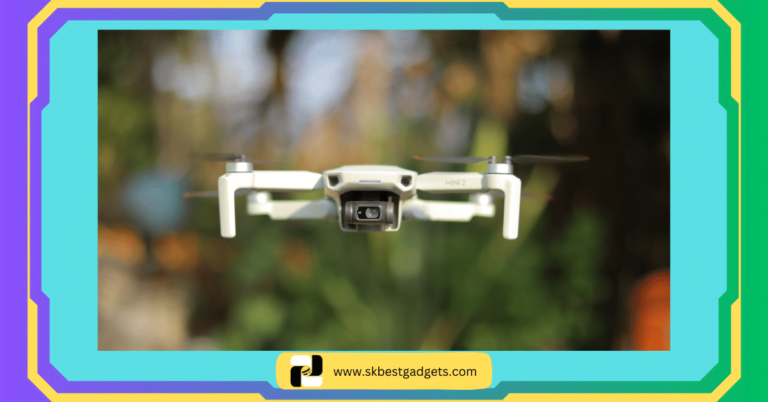What is Headless Mode on a Drone? (Each & Everything)

Picture this: you’re a drone pilot, ready to take to the skies and explore the world from above. You’ve got your trusty drone in hand, but suddenly, you realize that the drone’s orientation is all out of whack.
Left is right, up is down, and you’re left scratching your head trying to figure out which way is forward.
Enter headless mode, the hero of confused drone pilots everywhere. Headless mode is a nifty feature found on many drones that simplifies the flying experience by eliminating the need to worry about the drone’s orientation.
So, how does the headless mode work? But before let’s know some more about headless mode.
Final Key Takeaways
- Drone flies as you steer: Forget the drone’s direction, control it like you’re holding it in your hand.
- Beginner friendly: Less confusion, easier flying for new pilots.
- Practice makes perfect: Headless mode helps, but mastering drone control takes regular flying.
Table of contents
- What is Headless Mode on a Drone?
- How Does Headless Mode Work on a Drone?
- What are the Advantages and Disadvantages of Headless Mode on a Drone?
- Advantages of Headless Mode
- Disadvantages of Headless Mode
- Should You Always Use Headless Mode on Your Drone?
- What Different Drones Have Headless Mode?
- What are the Situations When Headless Mode is not Good to Use on a Drone?
- Final Thoughts on What is Headless Mode on a Drone?
What is Headless Mode on a Drone?
Well, it’s pretty clever. When you activate headless mode, the drone’s flight controls are no longer relative to its front or nose.
Instead, the controls become relative to the pilot’s position. This means that no matter which way the drone is facing, pushing the control stick forward will always make the drone move away from the pilot, and pulling it back will always bring it closer.
Headless mode is handy for beginner pilots who are still getting the hang of flying a drone.
It takes away the confusion and allows them to focus on mastering the basic controls without worrying about orientation. It’s like having a personal drone butler who always knows which way is up.
However, it’s important to note that headless mode is not a magical fix for all drone flying woes. It’s still essential to practice and develop your piloting skills to ensure a safe and enjoyable flight experience.
How Does Headless Mode Work on a Drone?
When the headless mode is activated, the drone’s flight control system adjusts the direction of movement based on the position of the remote controller, regardless of the drone’s orientation.
This means that pushing the control stick forward will always make the drone move away from the pilot, regardless of which direction the drone is facing.
Headless mode works by utilizing the drone’s internal compass and gyroscope to determine the position and orientation of the remote controller.
By doing so, it eliminates the need for the pilot to mentally adjust their control inputs based on the drone’s orientation.

It’s important to note that headless mode does not affect the drone’s physical orientation or its ability to perform maneuvers.
It simply changes the reference point for control inputs, making it easier for users to fly the drone more intuitively.
Curious about the importance of drone propellers? Dive deeper in our guide to learn how they make drones fly! [What is the Importance of Drone Propellers?]
What are the Advantages and Disadvantages of Headless Mode on a Drone?
While headless mode can be a useful feature for beginners and experienced pilots alike, it also has its advantages and disadvantages.
Let me tell you the advantages and disadvantages of headless mode on a drone.
Advantages of Headless Mode
1. Easy Orientation: One of the main advantages of headless mode is that it makes it easier for beginners to orient the drone. In traditional mode, the drone’s controls are based on its actual orientation, which can be confusing for new pilots.
Headless mode eliminates this confusion by allowing the pilot to control the drone based on their orientation. This makes it easier for beginners to fly the drone and reduces the risk of crashes or accidents.
2. Simplified Controls: Another advantage of headless mode is that it simplifies the controls of the drone. In headless mode, the controls are based on the pilot’s perspective, rather than the drone’s orientation.
This means that the controls remain the same regardless of the drone’s position or direction. This makes it easier for pilots to maneuver the drone and perform complex maneuvers without having to constantly adjust their controls.
3. Enhanced Safety: Headless mode can also enhance the safety of flying a drone, especially for beginners.
By eliminating the need to constantly adjust the controls based on the drone’s orientation, headless mode reduces the risk of pilot error and improves overall flight stability.
This can help prevent accidents and crashes, making headless mode a valuable feature for those who are new to flying drones.
Curious about a drone’s range? Check out our guide on How Far Can a Drone Fly From Its Operator?
Disadvantages of Headless Mode
1. Loss of Orientation Skills: One of the main disadvantages of headless mode is that it can lead to a loss of orientation skills.
When flying in headless mode, the pilot relies on the drone’s onboard sensors to determine its orientation.
This means that the pilot does not need to develop the same level of spatial awareness and orientation skills as they would when flying in traditional mode.
As a result, pilots who rely solely on headless mode may struggle to fly the drone in traditional mode or in situations where headless mode is not available.
2. Limited Flight Range: Another disadvantage of headless mode is that it can limit the flight range of the drone.

In headless mode, the drone’s flight range is limited to the range of the onboard sensors that determine its orientation.
This means that the drone may not be able to fly as far or as high as it would in traditional mode. This can be a drawback for those who want to use their drone for long-range flights or aerial photography.
3. Reduced Maneuverability: While headless mode simplifies the controls of the drone, it can also reduce its maneuverability.
In headless mode, the drone’s movements are based on the pilot’s perspective, rather than the drone’s actual orientation.
This means that the drone may not be able to perform certain complex maneuvers or fly in tight spaces as effectively as it would in traditional mode.
This can be a limitation for experienced pilots who want to push the boundaries of their drone’s capabilities.
Should You Always Use Headless Mode on Your Drone?
Headless mode essentially allows the drone to ignore its orientation and fly about the pilot’s position.
This means that no matter which direction the drone is facing, pushing the control stick forward will always make it move away from the pilot.
While this may sound advantageous, it can lead to a lack of understanding and awareness of the drone’s actual orientation, which can be problematic in certain situations.
Using headless mode can prevent pilots from fully understanding and learning how to control their drones manually.
Manual control is essential for developing piloting skills and being able to navigate the drone in different scenarios.
By relying too heavily on headless mode, pilots may miss out on the opportunity to improve their flying abilities and become more confident in handling their drones.
Furthermore, headless mode can create a false sense of security, leading to complacency and a lack of attention to the drone’s surroundings.
This can increase the risk of collisions or accidents, especially in crowded areas or when flying in challenging conditions.
Wondering how long does it take to charge a drone? Check out our info below to get you flying again quickly!
What Different Drones Have Headless Mode?
While not all drones have this feature, it is becoming increasingly common in many models.
1. DJI Mavic Mini
The DJI Mavic Mini is a popular drone that offers headless mode. This compact and lightweight drone is perfect for beginners and enthusiasts alike.
With headless mode, you can easily control the drone’s movements without worrying about its orientation. This makes it easier to fly and capture stunning aerial footage.
2. Holy Stone HS720
The Holy Stone HS720 is another drone that comes with a headless mode. This high-performance drone is equipped with advanced features, including GPS positioning and follow-me mode.
With headless mode, you can confidently navigate the drone and focus on capturing breathtaking images and videos.
3. Syma X5C
The Syma X5C is a budget-friendly drone that also includes a headless mode. This drone is perfect for beginners who want to learn the basics of flying.
With headless mode, you can easily control the drone’s movements and perform tricks without worrying about its orientation.
While these are just a few examples, it’s important to note that headless mode is available on various drones from different brands.
When considering a drone, be sure to check the specifications and features to see if it includes a headless mode.
What are the Situations When Headless Mode is not Good to Use on a Drone?
While headless mode can be useful in many scenarios, there are certain situations where it may not be the best option:
1. Advanced Flying Techniques
Headless mode simplifies the flying experience by eliminating the need to adjust the drone’s direction to the pilot’s position.
However, for more advanced flying techniques such as aerobatics or precise maneuvers, maintaining control over the drone’s orientation becomes crucial.
In such cases, using headless mode could limit the pilot’s ability to perform complex maneuvers.
2. Racing and Competitions
In racing and competitive drone events, speed and agility are of utmost importance. Pilots need to have full control over their drones, including the ability to adjust the orientation quickly and accurately.
Headless mode may hinder a pilot’s ability to make split-second decisions and adjustments, potentially resulting in a loss of control and poor performance.
3. GPS Navigation and Waypoint Missions
Headless mode relies on the drone’s internal compass to determine its orientation. While this works well in most cases, it can be problematic when using GPS navigation or executing waypoint missions.
In these situations, the drone’s heading is crucial for accurate positioning and navigation. Headless mode may cause confusion and inaccuracies, leading to errors in waypoint navigation or missing the intended target.
Final Thoughts on What is Headless Mode on a Drone?
So, headless mode on a drone is a mode that allows you to learn more about how to fly your drone easily.
You should keep in mind that the headless mode has advantages and disadvantages and also there are some specific situations where you should NOT use the headless mode.
I hope this article has helped you with what this mode is.







